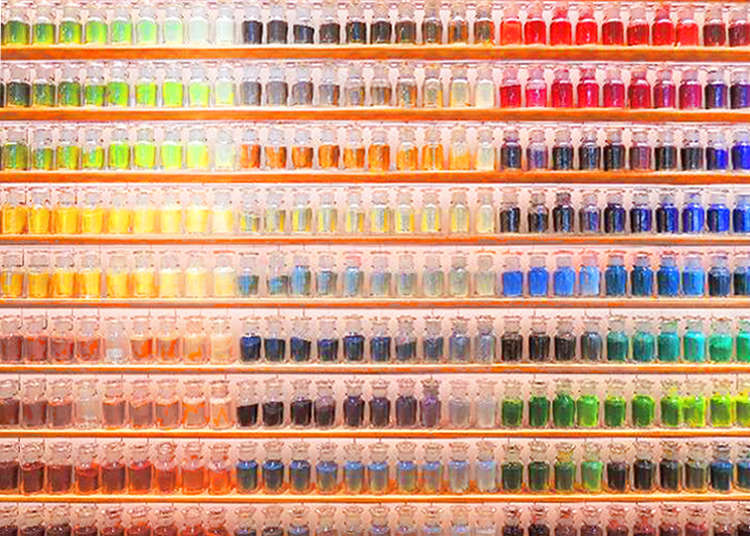
Art Materials Lab PIGMENT is an arts materials research lab that operates under the two mottos of “carrying on the legacy of traditional materials and methods” and “supporting and promoting young artists on an international level.” (By the way: the shop’s name PIGMENT doesn’t refer to the English word but to the French, and therefore. is pronounced as such.) Dealing in high-quality and sometimes even rare colors and art supplies, the shop also often hosts both Japanese and international artists and scholars.
LIVE JAPAN joined a group of Japanese and international college students on their trip to PIGMENT.
Over 10,000 Items from the World of Paint and Color
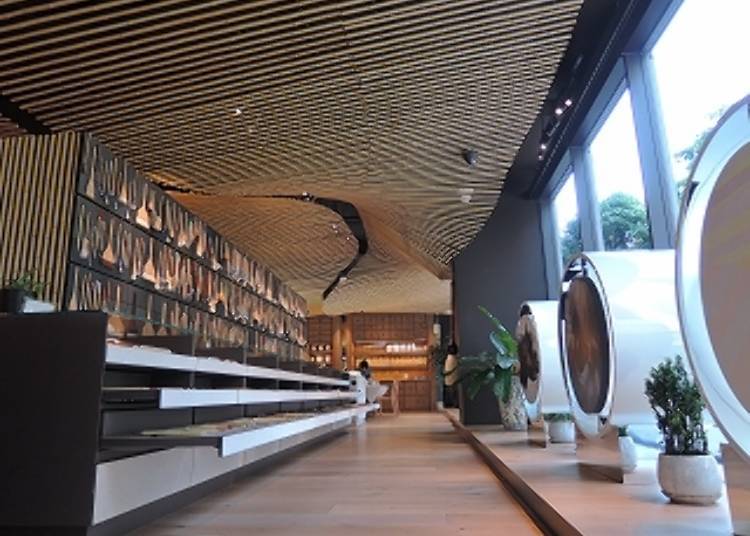
The shop was designed by the internationally acclaimed architect Kengo Kuma, who is also in charge of designing the New National Stadium for the Tokyo Olympics in 2020. With the focus being on wood and bamboo, the modern design strongly relies on Japanese aesthetics.
The first thing that our group of students noticed was a colorful wall full of differently colored glass bottles – what could that be?
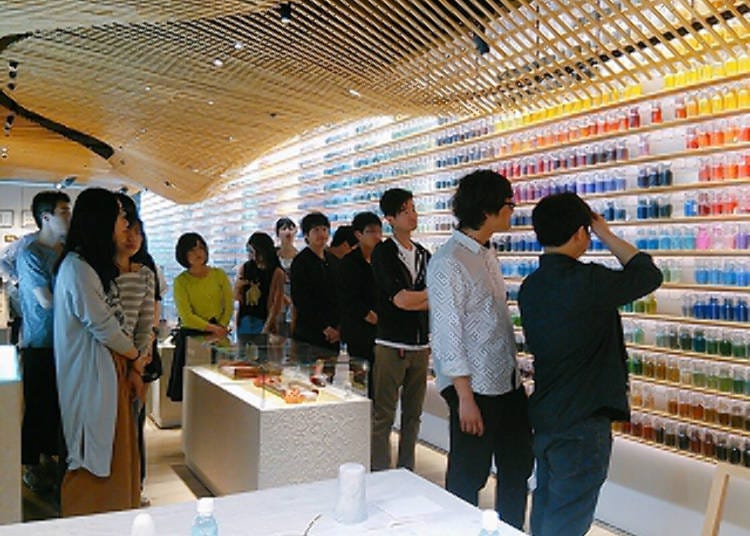
This wall holds over 4,500 different colors, the majority of them being natural mineral pigments. When mixed with oil, they’re used to make gorgeous oil paintings, while mixed with natural glues made from such things as animal bone or skin, the colors are used for Japanese paintings. As the pigments are made by crushing natural rocks, they glitter like tiny jewels in the light – that also makes for amazing photos.
“Of course I used paint before, but I never knew what it was made out of.
“You may ask for ‘white,’ but there are so many different shades!”
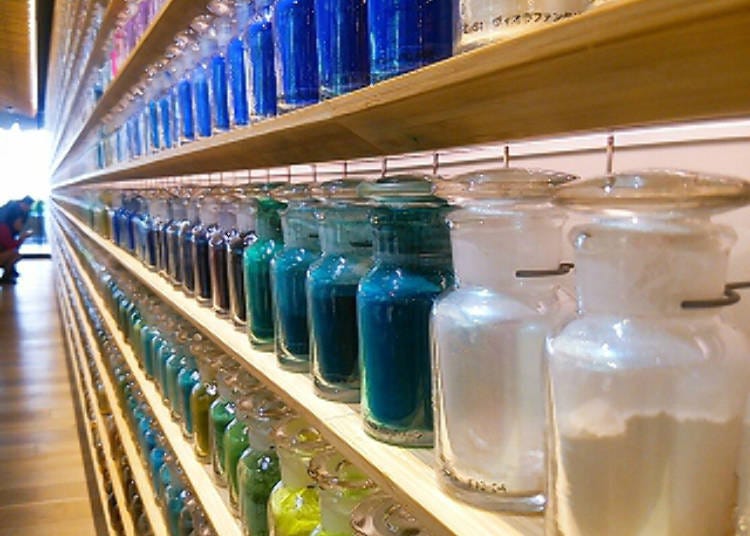
In addition to the thousands of colors, PIGMENT also offers over 10,000 individual art supply items on 200 square meters, such as more than 600 kinds of brushes, 80 rare kinds of inkstone, and 50 types of glue that can even be used for such delicate things as restoring Buddhist statues or violins.
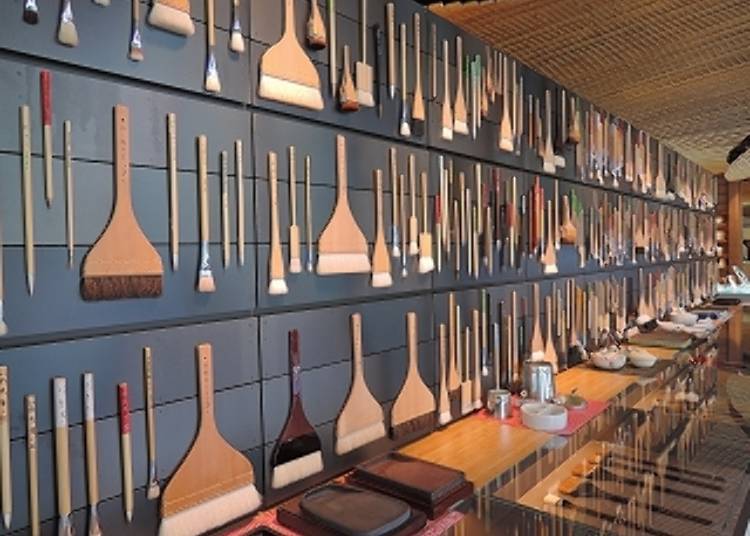
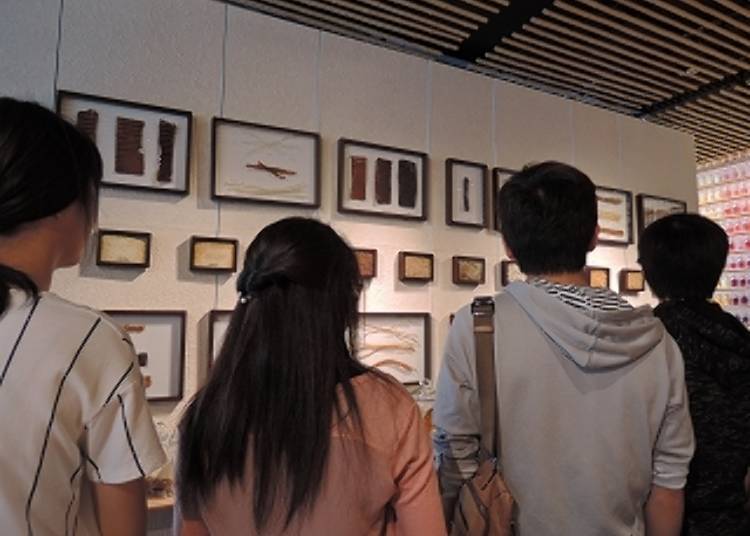
Experiencing PIGMENT’s Unique Art Workshops
PIGMENT is operated by Warehouse TERRADA, a company that has its base on Tennozu Isle and is involved in various businesses, such as art supplies, and even storage for movies, audio, media, art, and wine. PIGMENT itself was born in 2015, with the mission to support the past and future of art by developing the supplies needed for “the restoration of art objects” and “the collection and development of traditional painting materials.”
Thus, PIGMENT also acts as a laboratory and a museum that transmits both art and culture. A workspace can be found inside the store, offering you to try all kinds of materials and supplies under the advice and guidance of art supply experts. On top of that, workshops are held regularly that attract a wide range of people, from interested amateurs to professional artists.
Of course, the students wanted to try their hands at painting as well – so everyone picked their favorite color and let their creativity run wild.
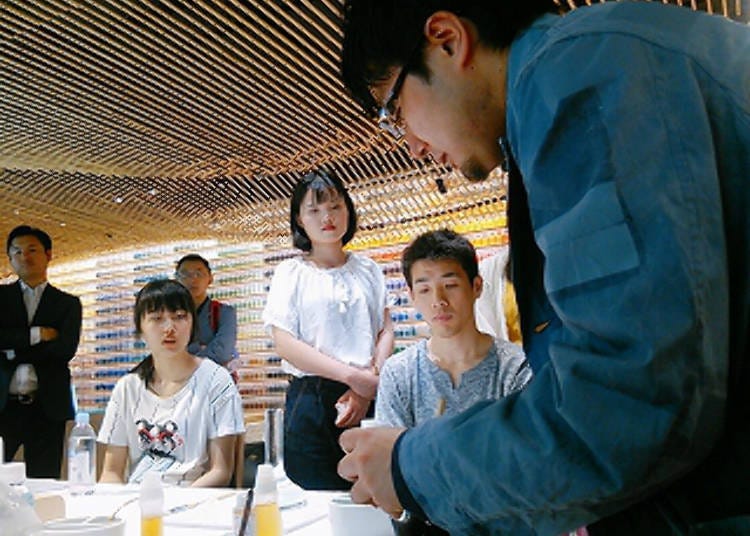
The first step is deciding the base color from the pigment powder called “suihi.” Then, this base color is mixed with water, honey, and other colors on a marble slate. “The trick to mixing is to move in the shape of an eight, like you want to crush the particles,” explains the chief. The marble prevents the paint from hardening by heat. Starting out with a base color of blue, various shades emerge with this mixing process, such as indigo, marine, and ultramarine.
Now the students try to mix their own color.
“It reminds me of fried egg!”
“I want to get a lavender shade from my lucky color purple.”
Everyone gets to work eagerly and with a very clear image in mind. A deep wine red, a sunny yet transparent yellow – getting to one’s favorite color by trial and error. Some students end up with an entirely different color than what they had planned: “The more I mix, the further away from the color it gets!” Team of experts is ready to help and guide in that case.
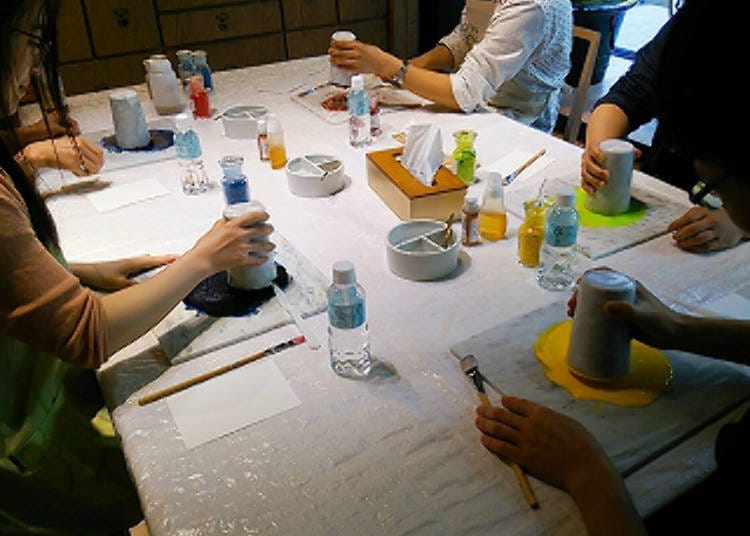
Eventually, everyone ends up with a color they love and present it eagerly.
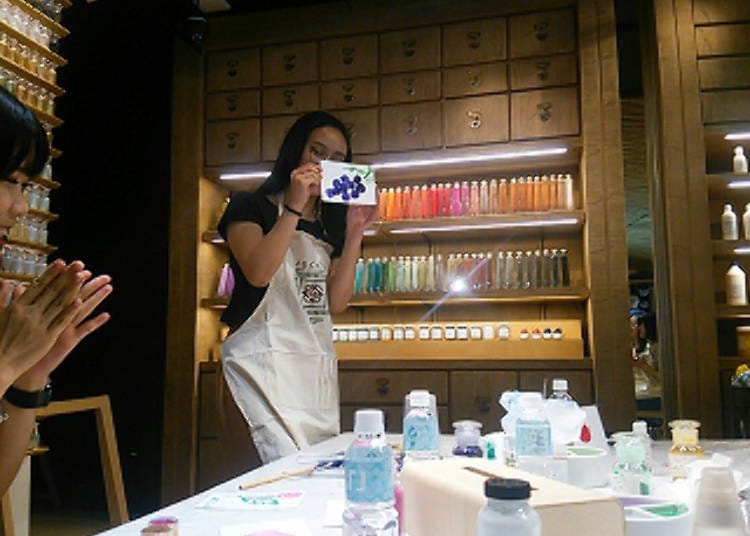
Fourteen students have mixed fourteen individual colors:
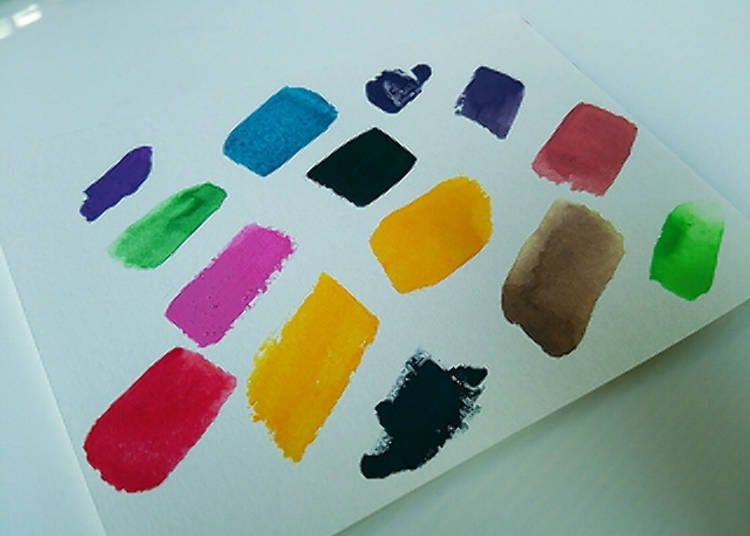
“To be honest, I don’t think I have a knack for art, but I was totally immersed in the world of colors as I mixed my paint. It’s a world that I don’t understand at all, but there are still so many new experiences for me to make! If you approach the topic with enthusiasm like that, you’ll discover a lot of new things.” (Nationality: China)
“When I found out that Japan has found a way to combine modern techniques with ancient Chinese inkstones, I was really moved.” (Nationality: China)
“The experience if making traditional painting materials in a country different than your own was a very meaningful experience for me. As an exchange student, I was able to discover new aspects of my own culture, such as regarding brush, ink, paper, and inkstone.” (Nationality: China)
“It really impressed me how people of old times were able to make paint with their own hands and made paintings that traversed generations. I got a thorough impression if the history and culture of painting.” (Nationality: China)
Not everyone gets excited upon hearing the word “art.” “I was bad at drawing ever since I was little...” or “Art? Like the masterpieces in museums?” are phrases often muttered when the topic comes up. Rather than this, however, art is about the experience of creating something, and the pleasure of this process. PIGMENT is the embodiment of this experience, acting as the perfect place to dip your toes into the amazing world of paint and art – now, go and create!
-
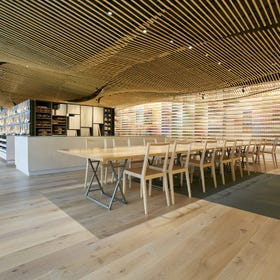 Art Materials Lab PIGMENT画材ラボ PIGMENT
Art Materials Lab PIGMENT画材ラボ PIGMENT-
Address
TERRADA Harbor One building 1F, 2-5-5, Higashishinagawa, Shinagawa-ku, Tokyo, 140-0002
-
Nearest Station
Tennozu Isle Station (Rinkai Line / Tokyo Monorail Haneda Airport Line)
3 minutes on foot
- Phone Number 03-5781-9550
-
Address
TERRADA Harbor One building 1F, 2-5-5, Higashishinagawa, Shinagawa-ku, Tokyo, 140-0002
-
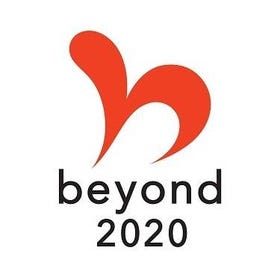 LIVE JAPAN is certified by the beyond2020 program.
LIVE JAPAN is certified by the beyond2020 program.
- Area
- Category
*Prices and options mentioned are subject to change.
*Unless stated otherwise, all prices include tax.
Popular Tours & Activitiess
Recommended places for you
-

Kappabashi Street
Old Towns (Shitamachi)
Asakusa
-

ANO-NE Kids Club
Other Sightseeing
Ginza
-

The Imperial Palace
Other Architecture
Tokyo Station
-

Ueno Zoo (Ueno Zoological Gardens)
Zoos, Aquariums & Botanical Gardens
Ueno
-

Shibuya Crossing
Downtown
Shibuya
-

The Tokyo Station Marunouchi Building
Landmarks
Tokyo Station
-

Simply Oishii Wagashi School Discover Japanese Culture Through Wagashi: A Hands-On Experience!
by: Guest Contributor
-

[Extended Offer!](12% OFF KKday Coupon) Mt. Fuji Autumn Leaves, Powder Snow & More! 15 Best Tours to Experience Japan in Fall & Winter
-

Enjoy Japan's Gorgeous Winter Lights! Ride the Romancecar to Shonan no Hoseki Illumination
by: Guest Contributor
-

A Travel Game Changer! Go Hands-Free Between Tokyo and Kyoto with LUGGAGE EXPRESS by JTB and JR Tokai
by: Guest Contributor
-
Ad

Preserving the Beauty of World Heritage Site Shirakawa-go for the Future Through Responsible Travel
-

Keisei × Keikyu 16-Temple Goshuin Tour: Discover Deeper Tokyo & Yokohama
by: Guest Contributor
Inspiration for Accommodations
-

Enjoy Mt. Fuji from the Comfort of Your Room! Recommended Ryokan with Mt. Fuji View
-

Stay Near the Cherry Blossoms! Hotels for Cherry Blossom Viewing in Tokyo
-

Family-Friendly Hotels with Free Shuttle to Disneyland: Convenient Access for a Magical Stay
-

Top Ranked Hakone Hotels with Mt. Fuji View: Enjoy Stunning Scenery from Your Private Space
-

Convenient Tokyo Hotels with Airport Shuttle: Ideal for Families and Heavy Luggage
-

Stunning Tokyo Tower View Hotels: Enjoy Spectacular Scenery from Your Private Space
-

Convenient Asakusa Hotels with Kitchens: Ideal for Extended Family Visits
-

Experience Luxury: Hakone's 10 Best Five-Star Accommodations
-

Enjoy Mt. Fuji Autumn Leaves! Top Hotels Near the Popular Autumn Leaves Corridor
-

Experience Hakone Fall Foliage from Your Room with Stunning Views
-

Asakusa Ojima: Experiencing Edo Kiriko Glass Cutting at a Traditional Family Workshop in Asakusa
-

8 Unfamiliar (But Totally Normal) Customs in Japan!
-

Essential 25 Japanese Travel Phrases You Need to Know Before Your Trip
-
Ad

Japan Marks 150 Years of Railway Service! Our Report on the "Beyond Station Expo UENO" Cultural Event
-

Spending Wonderful Time Alone in Shibuya - Free Cosmetics and a Hundred-Yen Bus!
-

Top 50 Absolutely Must-Do Things in Tokyo: Don't Miss Out the Ultimate Experience
- #best ramen tokyo
- #what to buy in ameyoko
- #what to bring to japan
- #new years in tokyo
- #best izakaya shinjuku
- #things to do tokyo
- #japanese nail trends
- #what to do in odaiba
- #onsen tattoo friendly tokyo
- #daiso
- #best sushi ginza
- #japanese convenience store snacks
- #best yakiniku shibuya
- #japanese fashion culture
- #best japanese soft drinks












